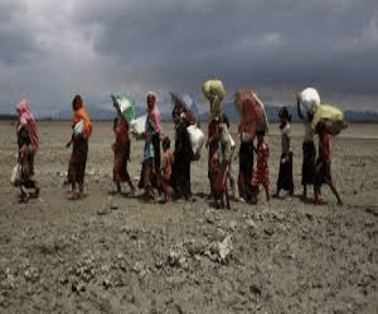India has topped the list of countries with the highest number of drug cheats in sports, according to the latest World Anti Doping Agency (WADA) report for 2022. The report highlights a growing concern over performance-enhancing drug use in Indian sports and raises serious questions about the effectiveness of current anti-doping measures.
Key Findings of the WADA Report
- Doping is the act of consuming artificial and often illegal substances to gain an advantage over others in sporting competitions
- India tested a total of 3,865 samples — urine, blood, and dried blood spot (DBS) combined — during the collection period that began on January 1, 2022 and ended on December 31, 2022, and 125 of them returned Adverse Analytical Findings (AAFs).
- In percentage terms, India’s 3.2% of AAFs is the highest in the world among nations that tested more than 2,000 samples.
- Out of the 125 AAFs, 37 tested positive in out-of-competition testing while 88 returned positive in in-competition testing.
- India’s total of 3865 samples put them on the 11th spot among all countries.
Global Comparison
- China tested most samples — 19,228 — but produced only 0.2% AAFs, or 33 positive results.
- Germany and Russia were next in terms of testing, 13,653 and 10,186 respectively, to be the only three countries to test over 10,000 samples.
- Germany recorded a total dope positive count of 42 while 85 Russian samples tested positive. In terms of absolute numbers, only Russia (85) and USA (84) come close to India’s 125.
- France recorded 72 AAFs out of 9775 samples while Italy had 73 positives from 9101 samples.
- Overall, 26 nations tested 2,000 or more samples with South Africa returning the second highest adverse finding at 2.9% (58 samples) after India.
- The third place was taken by Kazakhstan with 1.9% of its testing pool of 2,174 samples returning adverse findings.
- WADA noted a 6.4% increase in the total number of samples analysed and reported into its Anti-Doping Administration and Management System (ADAMS) in 2022 as compared to 2021. The percentage of AAF also went up from 0.65% in 2021 to 0.77% in 2022.
About The World Anti Doping Agency (WADA)
- WADA was established in 1999 as an international independent agency to lead a collaborative worldwide movement for doping-free sport.
- It was established by the International Olympic Committee (IOC) to combat doping in sports globally.
- WADA’s governance and funding are based on an equal partnership between the sport movement and governments of the world.
- WADA’s primary role is to develop, harmonize, and coordinate anti-doping rules and policies across all sports and countries.
- Its key activities include scientific research, education, the development of anti-doping capacities, and monitoring of the World Anti-Doping Code (Code), the document harmonizing anti-doping policies in all sports and all countries.
- It is headquartered in Montreal (Canada)
Structure Of World Anti Doping Agency (WADA)
- A 42-member Foundation Board (Board), the agency’s highest policy-making body,is jointly composed of representatives of the Olympic Movement (the IOC, National Olympic Committees, International Sports Federations, and athletes) and representatives of governments from all five continents.
- A 16-member Executive Committee (ExCo),to which the Board delegates the management and running of the agency, including the performance of all its activities and the administration of its assets.
National Anti-Doping Agency (NADA)
- NADA was established by the Government of India, with the objective of acting as the independent Anti-Doping Organization for India having a vision of dope-free sports.
- It was set up as a registered society under the Societies Registration Act of 1860 on November 2005.
- It was established in 2009 as an autonomous agency under the Ministry of Youth Affairs & Sports, Government of India.
- It is the apex body to implement anti-doping rules and policies that conform to the World Anti-Doping Agency (WADA), the international organisation that oversees anti-doping efforts worldwide.
- It cooperates with other anti-doping organisations, such as the National Dope Testing Laboratory (NDTL), the Indian Olympic Association (IOA), and the South Asian Regional Anti-Doping Organisation (SARADO).
Functions Of National Anti-Doping Agency (NADA)
- NADA conducts in-competition and out-of-competition testing of athletes across various sports disciplines, both at national and international levels.
- It maintains a list of prohibited substances and methods based on the WADA Prohibited List, which is updated annually.
- It manages the results of the doping tests and imposes sanctions on athletes who violate the anti-doping rules.
- It provides therapeutic use exemptions (TUEs) to athletes who have a legitimate medical need to use a prohibited substance or method.
- It conducts anti-doping education and awareness programmes for athletes, coaches, support staff, and the general public through various media platforms and events.
- It promotes anti-doping research and development to enhance the scientific and technical aspects of doping detection and prevention
Other Anti Doping Initiatives in India
The National Anti-Doping Act 2022
It provides legal backing to NADA’s. for regulating anti-doping activities in sports and to give effect to the United Nations Educational, Scientific and Cultural Organisation (UNESCO) International Convention against doping in sport. The act aims to ensure the highest standards of integrity while participating and preparing for sports competitions, both domestically and internationally.
National Dope Testing Laboratories (NDTL):
NDTL under the Ministry of Youth Affairs and Sports, is responsible for sample analysis and research work in the field of dope analysis. The NDTL is WADA-accredited, this accreditation is a testament to the NDTL’s commitment to quality and accuracy in its testing procedures.
Conclusion
The latest findings by the World Anti Doping Agency place India in the global spotlight, not for athletic achievement, but for doping-related violations. While institutions like NADA and NDTL are working to curb these trends, the 2022 statistics highlight an urgent need for stricter enforcement, better athlete education, and a cultural shift toward clean sportsmanship in the country.
To Download Monthly Current Affairs PDF Click here
Click here to get a free demo
Discover all about CLAT Exam



